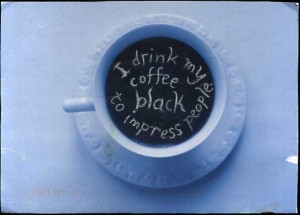We were concerned that traveling Gluten Free would be tough. And not even just gluten free – I can’t eat potato or corn, and my sweetheart can’t have rice. So, we were both headed abroad knowing that food choices could be tough. We had the good fortune of staying with family, so for most of the journey we had a kitchen and fridge to stock with staples we could rely on. For me – mostly eggs, rice cakes, delicious olive paste, incredible fresh green olives. For my sweetheart – she had the bonus of finding gluten free bread, plus corn cakes, jam, and yogurt. Then we shared fruit, veggies and local cheeses. She brought her own corn pasta, and I had no trouble finding rice pasta as needed in the local “Veritas” (organic) market for family dinners. We even found quinoa! Local markets and/or supermarkets also had lovely fresh meats, fish and produce for family dinners. We both brought some snack bars (Kits Organics for her and Luna Protein for me) as well as trail mixes. Of course, there were also lots of delicious treats we could both have. Europe has an impressive array of yogurts, puddings, and other cold delights in small jars. (Less ice cream though, in the freezer sections.)
Overall, food turned out to be less of a problem than we feared. When going out, my sweetheart was invariably able to get “patatas bravas,” a local dish of fried potato with a yummy spicy mayonnaise. Tapas (or pinxtos as they are called in San Sebastian) were harder for me to navigate, so often I just didn’t. Dinners out were easier – I could almost always find some delicious fish or chicken and vegetable options in the Menu del Dia – a 10-15 Euro daily menu with 3 courses and wine and coffee included. As my sweetheart is more sensitive to gluten and cant get away with any exposure, she usually stuck to Ensalada Mixta (salad, tuna, olives, and hardboiled eggs) with a potato side dish. All in all, it worked out well. We weren’t able to sample the breadth of Spanish gourmet cuisine, but we still had some flavorful dishes and local delicacies.
As a Naturopathic Doctor, I was constantly assessing the Mediterranean Diet and to see how the classic reputation of the region matched the real fare. As I suspected, there was plenty of bread, cheese, sugar, and packaged foods available as in the Standard American Diet (SAD.) There were a few noticeable differences though that may account for some of Europe’s lower body weights and improved life expectancy. First, there was no bacon. Yes, “bacin” was on some menus, but it was peameal-style bacon, pan-fried and not the true “bacon” of North American fame. Second, beef was rare to see on a menu or in the supermarkets, and was quite expensive. This made sense as we drove across the country, as there were very few cows. European terrain is not made for grazing the way Texas is.
Finally, and perhaps most impressive to me was the rest stops for food along highways. Each one was set up like a classy buffet restaurant, complete with chefs behind the food casing presenting grilled vegetables, roasted chicken, and a wide arrays of sandwiches, jambon, fruit and cheese choices. There were mini bottles of wine and cans of beer at every register, as if instead of being on a roadtrip one was intentionally stopping at that location for a meal. And stop everyone did, even for coffee. The American in me was shocked that people were literally getting perfect little iced espressos and walking to sit down and drink it before they got back on the road. We are such a to go culture! The contrast was very strong, and was I think the best illustration of the differences between our SAD diet culture and that of the Mediterranean. They sit down and savor a meal, a coffee, and a moment in time. It’s a lifestyle, a way of thinking, and a paradigm. We eat on the go, “para llavales”. We Rush, wolfing down food, eating mindlessly as we multitask and gulping down our beverages while we push on ahead. And we pack on the pounds and generate chronic disease as we go along, coercing our nervous systems into simultaneously digesting and running at the same time.
I am still filtering through layers of impressions, photos and reflecting on the whole experience of world travel. I highly recommend Spain to anyone – Barcelona is the second most popular tourist destination in the world, and well worth the hype. Traveling gluten free was not a problem; we were able to find great local resources and food options, especially for a food adventurist. For those who can eat gluten, there is an incredible world of tapas out there just waiting your arrival! But do yourself a favor – eat like you have all the time in the world.
 I recently read an article that most Americans eat for 15 hours a day. Apparently, the body needs a 12 hour fast daily to clear liver glycogen, thus switching metabolism to utilize the body’s stores (fat) to fuel the basic metabolic rate. Without this 12 hour fast, the liver does not get to ever fully utilize glycogen stores, and food/fuel aka glucose gets stored as fat.
I recently read an article that most Americans eat for 15 hours a day. Apparently, the body needs a 12 hour fast daily to clear liver glycogen, thus switching metabolism to utilize the body’s stores (fat) to fuel the basic metabolic rate. Without this 12 hour fast, the liver does not get to ever fully utilize glycogen stores, and food/fuel aka glucose gets stored as fat. Hint: learn to love black tea or coffee, green tea, and/or hot lemon water before your 12 hour fast is over if you are honestly wanting to lose weight. If, like me, you are too busy to make changes right now, just think about it, watch your patterns, and see if you can do it every once in awhile or on weekends.
Hint: learn to love black tea or coffee, green tea, and/or hot lemon water before your 12 hour fast is over if you are honestly wanting to lose weight. If, like me, you are too busy to make changes right now, just think about it, watch your patterns, and see if you can do it every once in awhile or on weekends.
